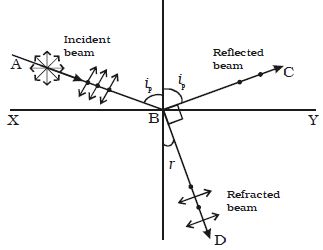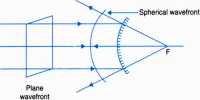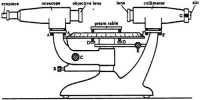Polarization by Reflection: The simplest method of producing plane polarized light is by reflection. Malus discovered that when a beam of ordinary light is reflected from the surface of transparent media like glass or water, it gets polarized. The degree of polarization varies with angle of incidence.
Consider a beam of unpolarized light AB, incident at any angle on the reflecting glass surface XY.
Vibrations in AB which are parallel to the plane of the diagram are shown by arrows. The vibrations which are perpendicular to the plane of the diagram and parallel to the reflecting surface, shown by dots (Figure).

Fig: Polarization by reflection
A part of the light is reflected along BC, and the rest is refracted along BD.
On examining the reflected beam with an analyzer, it is found that the ray is partially plane polarized.
When the light is allowed to be incident at a particular angle, (for glass it is 57.5O) the reflected beam is completely plane polarised. The angle of incidence at which the reflected beam is completely plane polarised is called the polarising angle (ip).













